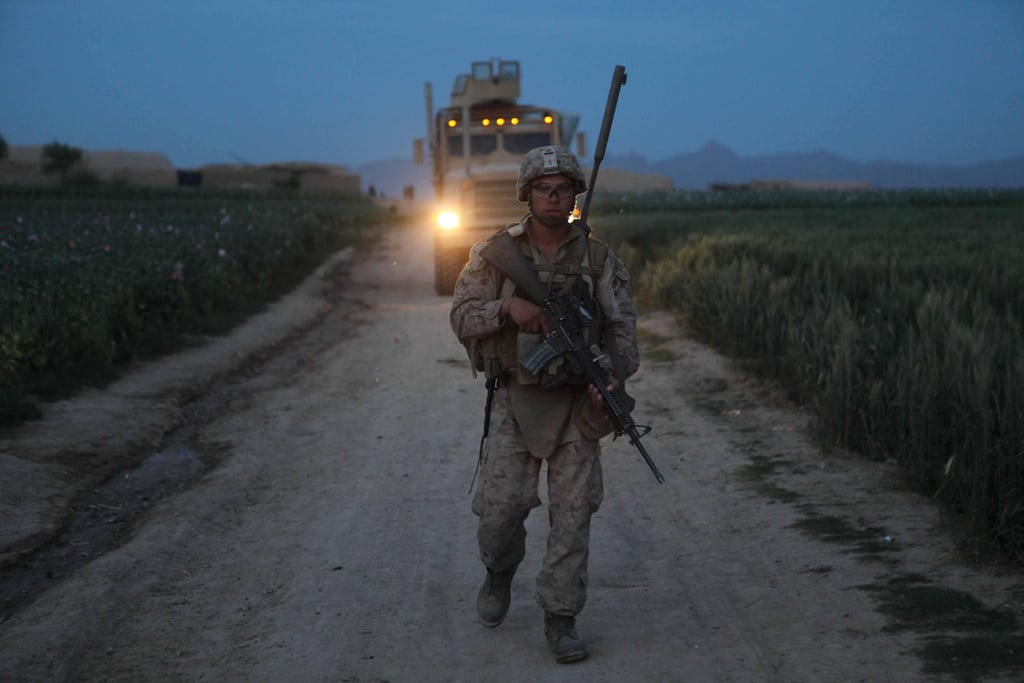 Photo by Cpl. Marco Mancha | https://www.flickr.com/photos/dvids/5687322282/in/p
Photo by Cpl. Marco Mancha | https://www.flickr.com/photos/dvids/5687322282/in/p
Fighting the Same Fight: Nine Months of a New Strategy in Afghanistan
Speaking from Fort Myer, Virginia last August, President Trump outlined his military strategy for the war in Afghanistan. “From now on,” he declared, “victory will have a clear definition: attacking our enemies, obliterating ISIS, crushing al Qaeda, preventing the Taliban from taking over Afghanistan, and stopping mass terror attacks against America before they emerge.” The days of nation-building, Trump asserted, were over. Instead the mission was simply to kill terrorists. In the nine months that have followed since the announcement of the new strategy, implementation has rolled out as planned: The Pentagon switched the determinant for U.S. military support of the Afghan National Security Forces from the timetables the Obama administration used to a “conditions-based” approach; the State Department cut $900 million in security aid to Pakistan; India agreed to step up efforts to support the U.S.-Afghan mission – all three of which Trump called for in his address at Fort Myer. Additionally, General John Nicholson, Commander of U.S. and NATO forces in Afghanistan – who Trump nearly fired a year ago – is reportedly being replaced in the coming months by Lieutenant General Scott Miller, Trump’s first nomination for a Commander in the field.
However, despite nine months of the new strategy and a coming change in command, the Department of Defense Inspector General’s quarterly report to Congress – released May 21 – detailed that from January 1 to March 31, “civilian casualties were at near record high levels, and U.S. intelligence officials predicted that the overall security and economic situation in Afghanistan would deteriorate modestly this year.” Moreover, despite the pressure the U.S. has applied to Pakistan, the DoD IG found no evidence that Pakistani safe havens for Al-Qaeda, ISIS-Khorasan and the Taliban had been shut down by Islamabad. Despite the change in strategy, the war is showing few signs of improving, with just fifty-six percent of districts controlled by the Afghan government in January 2018, compared to seventy-one percent in January 2016.
Why? For two reasons: First, the new strategy can hardly be considered new. As The New York Times noted back in August, the main features of Trump’s plan for Afghanistan – “a mix of conventional military force and diplomatic pressure on Pakistan” — are not substantively different from what characterized the Obama administration’s approach. Even Trump’s rhetoric about killing terrorists instead of nation-building was not new, ringing very similar to George W. Bush’s rhetoric leading up to the invasion of Afghanistan in 2001.[1] [2]
The second problem is that the “new” strategy relies on tactical and rhetorical changes, rather than on structural and political ones. It assumes that change in the situation on the ground in Afghanistan can come without significant change in directive from Washington. The contrast between the lofty expectations set out in Trump’s speech last August with the metrics supplied by the DoD IG three weeks ago is a striking example of this.
Another example is the reported appointment of Lt. Gen. Scott Miller to take over Gen. John Nicholson’s command of U.S. and NATO forces in Afghanistan. Though, as Admiral Michael Mullen (ret.) – former Chairman of the Joint Chiefs of Staff – noted, Miller is a good, well-experienced appointment, the problems that plague U.S. efforts in Afghanistan cannot be fixed by a change in Commander. While Miller can fight the fight, simply killing terrorists does not provide a viable pathway towards the victory that Defense Secretary Jim Mattis described as “a country whose own people and… own security forces can handle law enforcement and any threats.” Further, simply killing terrorists does not provide a pathway for Trump’s own definition of victory: “preventing the Taliban from taking over Afghanistan, and stopping mass terror attacks against America before they emerge.”
This has been evidenced frequently, from the Clinton administration’s failed strike on the so-called “terrorist university” in Khost in 1998 to the Bush administration’s reticence to help reconstruct Afghanistan after U.S. forces took Kabul in late 2001.[3] The only notable exception to the effectiveness of terrorist-killing alone was the bin Laden raid in 2011. However, even killing the very face of anti-American terrorism did not end the war in Afghanistan.
To begin to achieve progress, U.S. policymakers, particularly the executive branch, must clearly define the overarching goal dictating American involvement in Afghanistan, and from there determine the most effective way of achieving it. Mattis’ vision for a country that can handle its own law enforcement, governance and threat mitigation is good, but as is hallmark to our democracy’s civilian control over military policy, that vision must come from the White House.
[1] Smith, Jean Edward. Bush. Simon and Schuster. 2017. pp. 225, 249.
[2] Collins, Joseph J. Understanding War in Afghanistan. National Defense University Press. 2011. p. 50.
[3] Smith. Bush. p. 252





